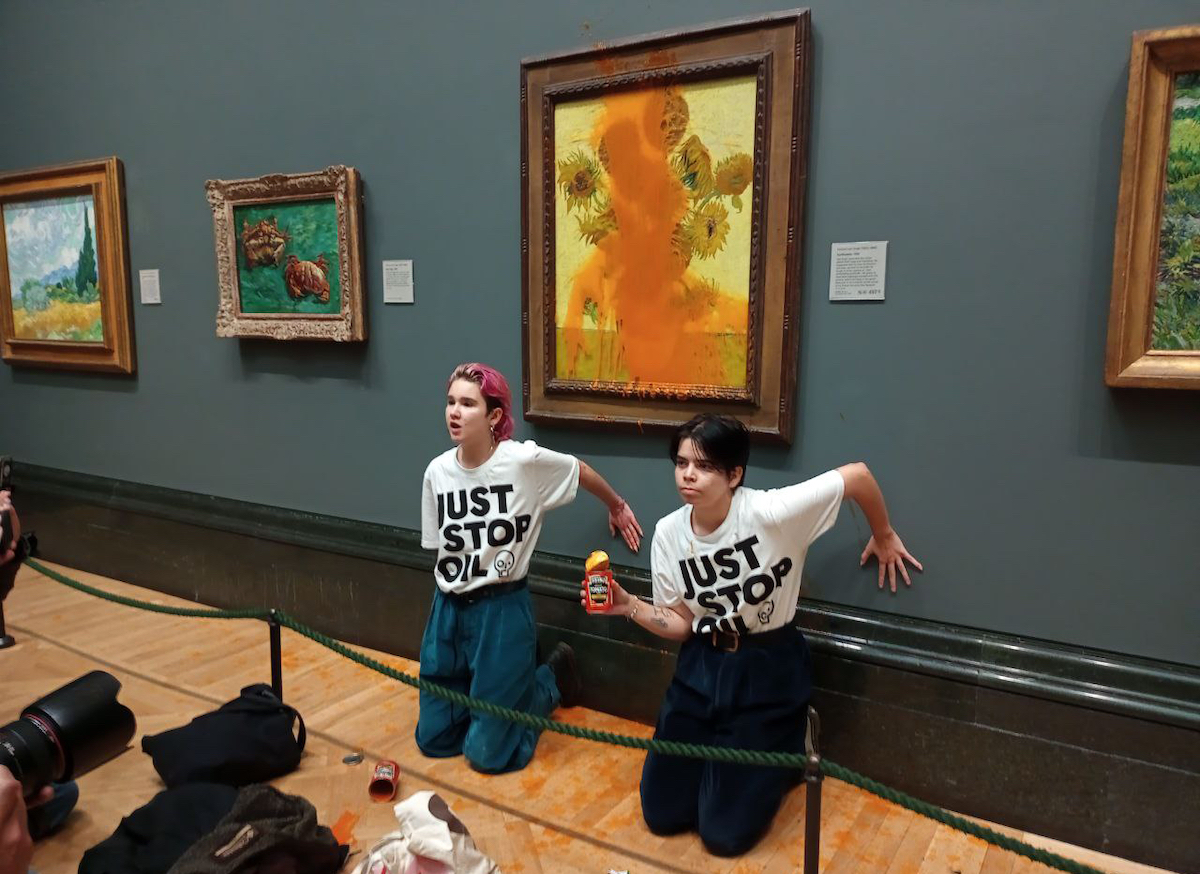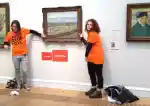
This year,some two dozen world-famous artworks, including pieces by Vermeer, Klimt, and and Munch, have been targeted by various climate activists groups. In a bid to bring attention to their cause, the demonstrators have hurled food at the paintings and glued themselves to frames, causing an uproar in the art community,despite the fact that they enacted no permanent damage to the art.
However, that may soon change.
In an interview withSky News,Just Stop Oil spokesperson Alex De Koning said that his group has considered following the example of suffragettes who “violently slashed paintings in order to get their messages across.”
“If things need to escalate then we’re going to take inspiration from past successful movements and we’re going to do everything we can,” De Koning continued. “If that’s unfortunately what it needs to come to, then that’s unfortunately what it needs to come to.”
In 1914, the suffragette Mary Richardson made headlines by walking into London’s National Gallery and slashing Diego Velazquez’s 17th-century paintingThe Rokeby Venus with a meat cleaver. The incident was intended as a protest against the arrest of suffragette Emmeline Pankhurst.
“I have tried to destroy the picture of the most beautiful woman in mythological history as a protest against the government for destroying Mrs. Pankhurst, who is the most beautiful character in modern history,” Richardson explained. “Justice is an element of beauty as much as color and outline on canvas.”
For months, museum administration across Europe have operated under the threat of a surprise appearance by climate activists. In June and July, Just Stop Oil membersglued themselves to the frames of four paintings in museums across the U.K., including van Gogh’s 1889 landscape,Peach Trees in Blossom. Another van Gogh, The Sower(1888), was splashed with pea soup by three activists from Italy’s Ultima Generazione, while two protestors from Germany’s Letzte Generation grouphurled mashed potatoesat Monet’s Haystacks(1890).
The viral episodes have ignited debate over the effectiveness of protest tactics.
“It’s people putting themselves on a stage in order to bring attention to something, but you have to ask, does this really change anything,” Adam Weinberg, the director of the Whitney Museum of Art, said in October at a panel discussion about social consciousness in museums.
Last month, 92 signatories from cultural institutionsreleased an open letterdenouncing the climate groups’ actions. The activists “severely underestimate the fragility of these irreplaceable objects, which must be preserved as part of our world cultural heritage,” the letter read. “As museum directors entrusted with the care of these works, we have been deeply shaken by their risky endangerment.”
Some climate activists are facing the legal consequences of their actions. On Friday, charges of property damage were filed against a 20-year-old protestor who glued themselves to the historic wooden frame of the Cranach painting The Calm on the Run to Egypt atBerlin’s Gemäldegalerie. In November, two activists in Belgium were sentenced to two months in prison for a protest in which one person glued their hand to the wall next to Johannes Vermeer’sGirl with aPearl Earringwhile another attempted to paste his head to the painting. The painting was unharmed.
According to theGuardian, the public prosecutor had requested four months in prison with two months suspended, saying in a hearing, “An artwork hanging there for all of us to enjoy has been smeared by defendants who felt their message took precedence over everything else.”

